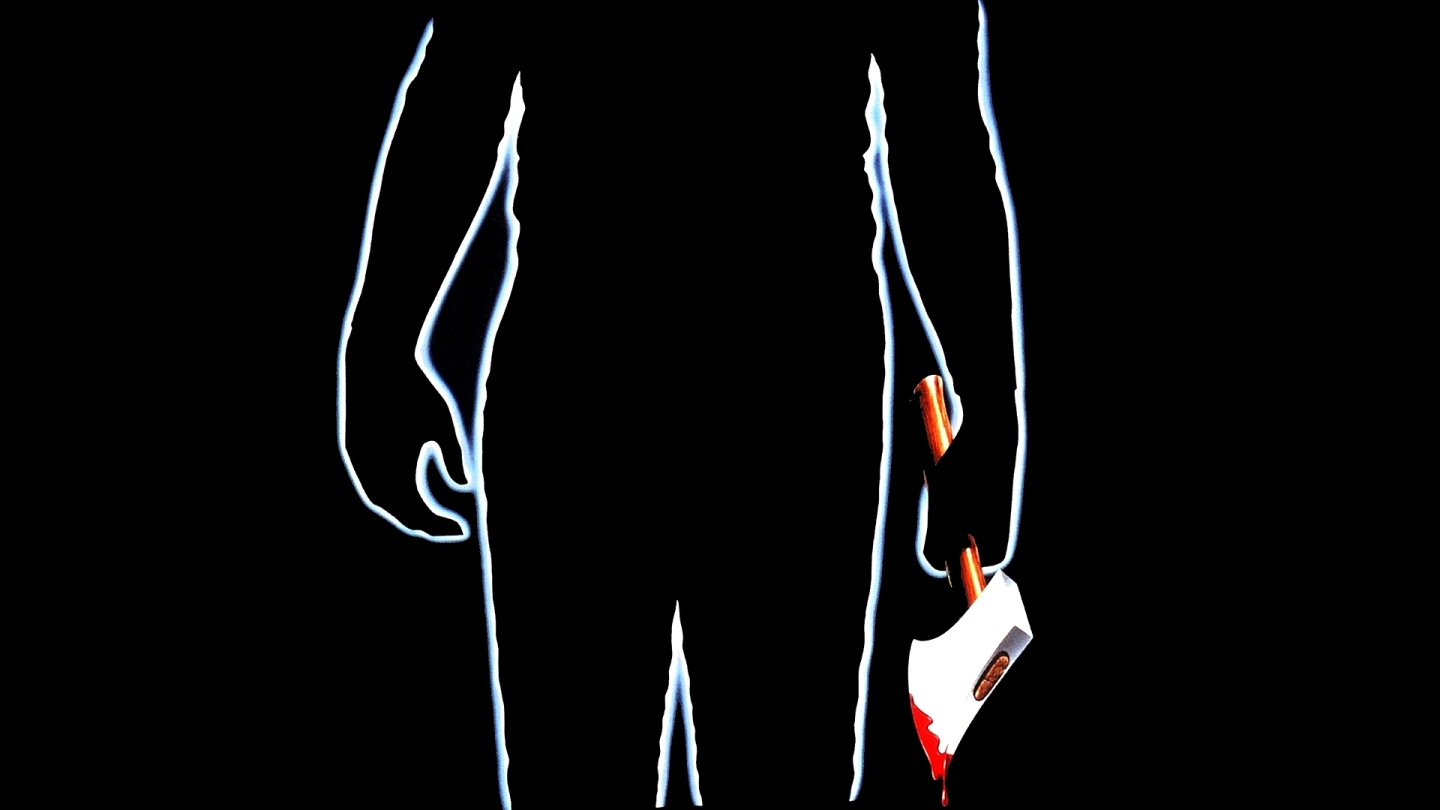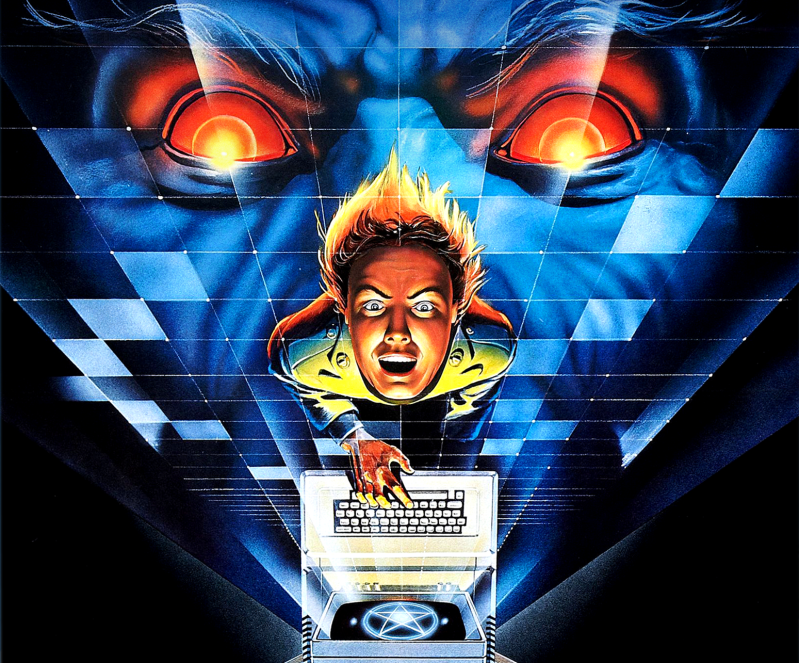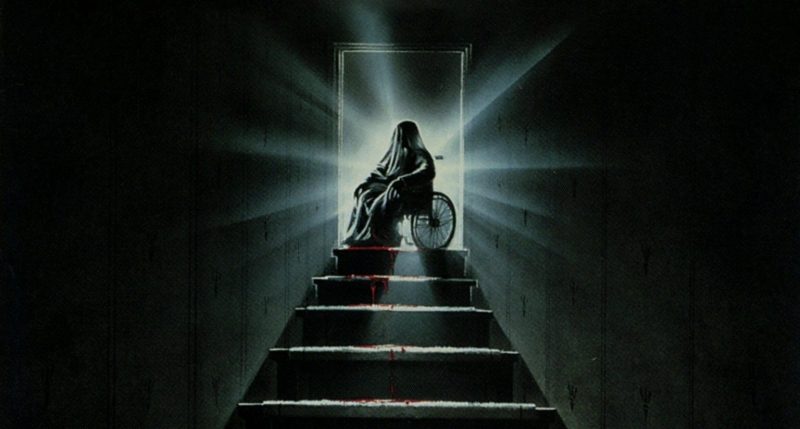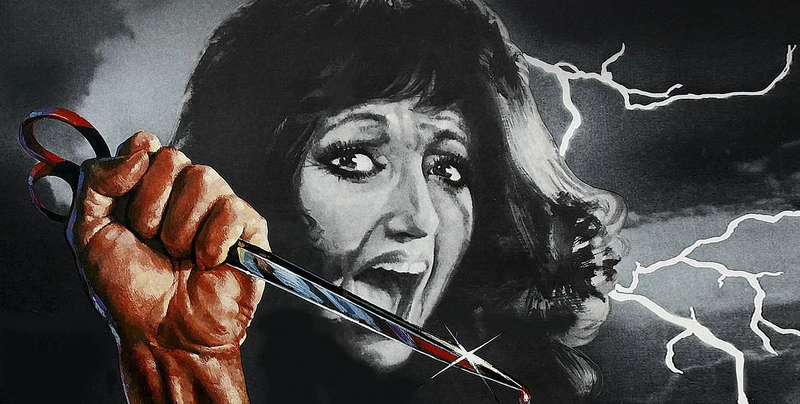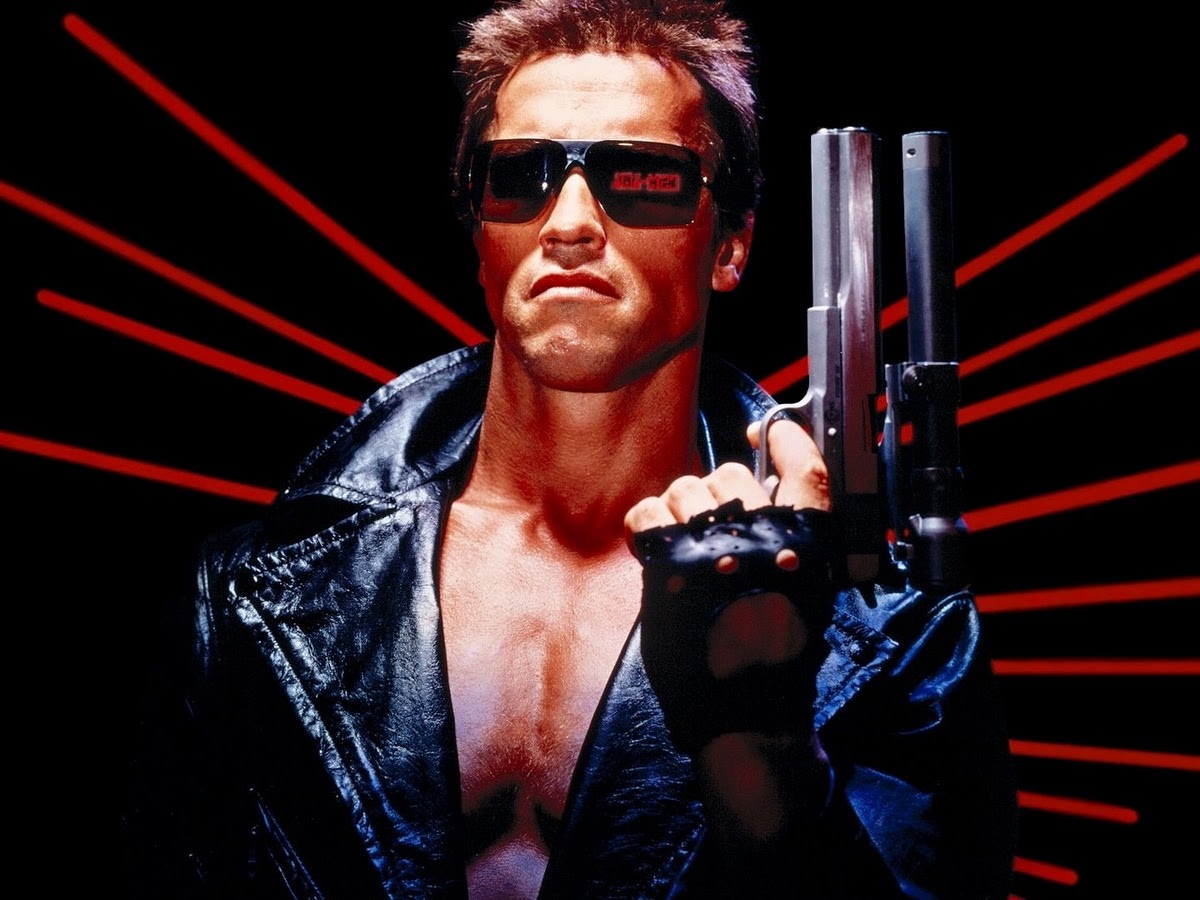
Friday the 13th Part 2 may be indicative of a character in transition, but it remains one of the finest in the series
When you think of anomalous franchise entries, Friday the 13th Part 2 is not a movie that immediately leaps to mind. Wes Craven’s New Nightmare and Halloween III: Season of the Witch can both be considered anomalous for obvious reasons, and when it comes to Jason Voorhees specifically, you would probably to look to body-swapping outlier Jason Goes to Hell or the space-bound Jason X, two productions handled by New Line Cinema after they had purchased the rights from Paramount with a view to producing the long-anticipated Freddy vs Jason crossover. In fact, when it comes to the basic slasher template, every Jason-led instalment but Part 2 can be considered unique in a superficial sense due to Paramount’s reliance on crowd-drawing annual gimmicks, such as a spectacularly goofy endeavour into Reagan-era 3-D, fan-dividing impostor killers and even Carrie based telekinesis. Ultimately, Part 2 becomes anomalous by default, sticking to the bare bones slasher formula at a time when the sub-genre was still relatively fresh.
Friday the 13th Part 2 was Paramount’s second punt at franchise immortality following interim effort My Bloody Valentine, a masked killer exploit in the Michael Myers mode that flopped at the box office, disappointing Paramount’s money men given the unbridled success of Friday the 13th. It’s no secret that the original Friday the 13th was designed to cash-in on John Carpenter’s slasher progenitor Halloween. According to writer Victor Miller, director/producer Sean S. Cunningham called him up and said, “Halloween is making incredible money at the box office. Let’s rip it off,” giving birth to the term slasher by genericising it for mainstream audiences, but the original’s left-field twist seemingly put an end to any franchise aspirations at a time when sequels weren’t exactly a given. Friday the 13th Part 2 apes the Halloween formula even more stringently. It also introduced us to a character who would transform Friday the 13th from a hugely successful standalone movie into a franchise colossus, but there was still much work to be done.
Friday the 13th Part 2 is a slasher in the most conventional sense. Though former American sweetheart Betsy Palmer’s wonderfully psychotic Pamela Voorhees had been replaced by a more marketable figure, Jason was still an unidentified POV stalker in the Halloween vein, no different from a dozen imitators to emerge from the slasher’s golden age. The movie also borrows rather liberally from Hitchcock’s Psycho. In Friday the 13th, the relationship between Jason and his mother is Norman and Norma Bates in reverse, but in Part 2 the dynamic is flipped to resemble Psycho more directly, a deceased Pamela motivating Jason into bloody acts retribution from beyond the grave. The film even has the gall to imitate Bay of Blood‘s infamous spear death, a scene that sees two lovers skewered crudely together while in the throes of crowd-pleasing passion. This has since been refuted, but barring some absurdly detailed coincidence, I’m just not buying it. One of the crew must have seen and been influenced by that movie, subconsciously or otherwise, though stranger things have happened.

With the original stalk-and-slash formula becoming somewhat tiresome, even receiving the spoof treatment by 1981 in the form of Mickey Rose’s middling send-up Student Bodies, the series would have to evolve in order to stay afloat in an oversaturated market. Though more successful than its like-for-like rivals, Friday the 13th Part 2‘s domestic gross of $21,700,000 was a huge comedown, managing roughly a third of its predecessor ($59,800,000). This would lead to a decade of Jason-led sequels that were unrecognisable from his initial foray. Gone were the slow, patient builds of yore, replaced by the kind of overt self-awareness and campy in-jokes that Jason has since become synonymous with. The Friday the 13th series will always have its detractors. Beyond Part 2, the franchise is little more than gimmicky trash, but it knows it is. It is compulsive, almost brainless viewing, but that’s what makes it so special. Despite its initial adherence to Carpenter’s formula, it was in the realms of throwaway mayhem that the series found its true calling.
In relation to the series at large, Friday the 13th Part 2 is very much at an embryonic stage of development, a sequel lacking identity which lurks lost and lonely in the forests of Camp Crystal Lake like an abandoned son learning the basics of overblown retribution. Until we get a proper look at him, Jason may just as well be his dear, deceased mother stalking the victims of the first movie, especially since the unidentified Pamela had hairy, thick hands and was quite obviously played by a man. At the time of Part 2’s release, younger audiences were still fascinated with the POV stalker and the anarchic sense of relatable violence that the notorious slasher exuded, but that initial buzz could never last. The original slasher template was about to have its throat slit, spilling out in supernatural lashings of censor-swerving irony, and the soon-to-be omnipotent Jason would find himself front and centre, struggling to stay afloat in an almost puritanical environment of slasher condemnation.
I told the others, they didn’t believe me. You’re all doomed. You’re all doomed.
Crazy Ralph
I must admit, I came to Friday the 13th Part 2 rather late in my fandom. In fact, it was the last instalment I ever got around to watching in full, which is why it has become such a personal point of fascination. As a horror-obsessed tyke mesmerised by the genre’s franchise killers, it was the hockey mask I craved, which should tell you everything you need to know about that particular prop’s importance to the continued prosperity of the series. I’d seen bits of Part 2 here and there, but stuntman Steve Daskewisz’s Jason wasn’t something to which I was accustomed (for those who are wondering, Daskewisz played the masked Jason in Friday the 13th Part 2; Warrington Gillette played the character in his unmasked form).
All these years later and Friday the 13th Part 2 is actually one of my favourite franchise entries. In fact, I’ll go as far as saying it’s a little too good for a ‘Friday’ movie. It may be a basic re-tread of its predecessor, but for me it is a marked improvement on that same old formula; as an out and out slasher, it may well be the very best in the series. Say what you will about an opening rehash of past events that borders on the annoyingly superfluous — perhaps a way to add significant minutes to the film’s relatively minuscule running time — but when Jason finally procures an ice-pick for the execution of Friday the 13th‘s final girl, Alice Hardy, he is patient, swift and brutal. John Carpenter would have been proud.

Actress Adrienne King wasn’t too pleased about being killed off so quickly, imagining herself as the Laurie Strode of the series going forward. For years, people assumed her departure was due to an ‘aggressive stalker’ who pursued King following her initial appearance, but according to a recent interview that wasn’t the case at all, Alice’s death coming as a complete surprise to King. “I actually said to [Paramount] that I would do whatever they needed for the sequel, I was theirs. And I was very happy — and I never got a script. Didn’t even get a script,” King would recall. “Then there was a car that picked me up, and little did I know, but I get up there and the crew’s almost gone. Everybody had gone. I didn’t realize, but they had actually filmed the movie already.”
It was actually King’s successor, Amy Steel, who Paramount and producer Frank Mancuso had pegged as the series stalwart, Friday the 13th Part 3 initially set to pick up where Part 2 left off, events taking place at a psychiatric hospital following its predecessor’s feverish finale. Steel turned down the recurring role, hoping to move onto broader pastures, something she later admitted to regretting. In yet another ironic twist, Halloween II, released five months after Friday the 13th Part 2 as a way to further tap into the genre’s spurting artery, took place on a hospital ward, the indomitable Michael Myers taking Jason’s place thematically. The film also aped Jason’s violence-driven formula in order to appease fans who had moved on from the less-is-more genius of Halloween. By 1981, Halloween was already considered passé in the minds of a bloodthirsty generation neck-deep in the tangible viscera of practical effects.
Friday the 13th Part 2 is still rather tame in the violence department save for the like-for-like Bava execution and one more stand-out offing, and there is a familiar foe at work making sure that events are kept relatively bloodless. Just like its predecessor, Part 2 would suffer from censorship interference, the MPAA insisting on a substantial forty-eight seconds of cuts in order for the movie to avoid the dreaded X rating. Halloween got by without the gore, relying of Carpenter’s sense of wit and skilful manipulation of space and shadows, but for the Friday the 13th series to continue to stand out as a superior clone in an era of SFX indulgence, creative violence was essential, and in this case somewhat lacking, a debilitating factor that is only mildly soothed by the startling flash-white transitions that frame every death. Though everything that Paramount released after The Final Chapter was censored beyond recognition, Part 2 is probably the least gore-driven of the franchise’s more graphic period, which in terms of suspense actually works in its favour.

Cuts were also responsible for the movie’s most elusive question: did Jason kill Paul? For years fans have wondered exactly what happened to Ginny’s tepid main squeeze, who just seems to vanish without any clear indication that Jason has added him to his rather substantial hitlist. At the end of Part 2, a seemingly incoherent Ginny is wheeled into an ambulance on a gurney, asking “Where’s Paul?”. Just prior to that, a seemingly false ending, assumed by many to be a crazed dream on Ginny’s part, sees Paul alive and well, only for Jason to smash through a window for the tried and tested ‘one last scare’. According to Crystal Lake Memories writer Peter Bracke, the confusion was mostly due to the film’s omission of an alternate ending, a shot of a quasi-reanimated Mrs Voorhees deemed just a little silly for a series that was yet to embrace the meta realms of self-awareness. There’s also an existing image of Paul with a scar on his head meant for a scene that was ultimately axed from the film, further proof that Paul did in fact bite the dust.
The late Ron Kurz, screenwriter for Friday the 13th Parts 2 and 3 and 1984’s The Final Chapter, would shed further light on the film’s initial intentions regarding Paul. “Jason’s coming through the window was written as reality. My intent was this: Paul is, in fact, killed by Jason. Ginny survives. She asks, when found, ‘Paul! Paul! Where’s Paul?’ Then we cut to Jason’s shack, and a close-up on Mrs. Voorhees’ head. It’s bathed in faint light, staring at the camera. Slowly, distinctly, a diabolical smile forms at the corners of its mouth. In other words, in answer to Ginny’s question, the smile tells us that Jason has killed Paul. That is how I wrote it and that’s how Steve Miner filmed it. Granted, as it appeared on screen, shot and edited as it was, I can see cause for some confusion.”
Thanks in no small part to Harry Manfredini’s Herrmann-esque crescendo of nerve-slicing strings, which effectively sets the tone for arguably the moodiest ‘Friday’ instalment, Friday the 13th Part 2 features the most engaging climax in the series thanks to a heroine who proves more than just a dumb chopping block. For me, Ginny is the strongest, most realistically sketched final girl that Jason ever faced, someone who questions when others dismiss, who uses sheer terror as a motivator, refusing to run blindly into a pathetic trap of her own making and instead summoning up the courage to give him the thrashing of his life. Not only does she attack our monomaniac brute with a plethora of deadly weapons, she uses her intelligence to fool Jason into a make-believe confrontation with his deceased mother. It is perverse, queerly absorbing stuff, and despite a series of gimmicks that make those later sequels more distinct in a superficial sense, still comparatively fresh back in 1981.
Steel is luminous as Jason’s most resourceful opponent, but the cast are richer on the whole, a relatively developed screenplay giving us more to care about than your typical low-end slasher fodder, relying more on mystery than repetition. We’re still in genericised territory, but our cast of nubile teens aren’t peripheral eye candy just yet (that formula would begin with Part 3). Again, this is good in terms of creating suspense. The more empathy you have with a character, the more you care about their fate. Particularly effective, though severely exploitative and derivative of Tobe Hooper’s hugely influential proto-slasher The Texas Chainsaw Massacre, is paraplegic Mark’s death. Yes, it plays on our basest and most patronising sympathies, but when the almost lucky-in-love teenager takes a machete to the face, his death touches a raw nerve, a fact that further embellishes the best kill of this particular instalment. A superbly executed sequence, Mark’s death is a blueprint for the ceaseless abattoir of creative slaughter that would follow, teasing the kind of remorseless killing machine that Jason would soon become.

This is still a movie starring Jason Voorhees, so there’s a ceiling when it comes to serious analysis, but for my money Friday the 13th Part 2 is the best pure slasher of the entire series, a film with a haunting quality that the rest of the franchise, save for Part 3’s more disquieting moments, doesn’t possess. Much like Jack Sholder’s divisive, gay panic horror Freddy’s Revenge, I tend to enjoy Friday the 13th Part 2 more as a standalone entry extricated from all that would follow, and it’s all to do with the evolution of the Jason character. Yes, this is a superior effort in the traditional sense, but it hasn’t quite evolved to possess the characteristics that made Friday the 13th one of the most iconic horror franchises in all of cinema. Many feel that the series grew increasingly worthless, especially after A New Beginning‘s series-reviving discrepancies, but Jason’s shallow, smash-mouth formula, however bloodless and lacking any kind of genuine horror, set the series apart as fast food cinema with a seemingly endless lifespan. The simplicity of Part 2 could never be repeated if the series was to remain popular. Part of the fun was anticipating what tricks Paramount would pull to keep the series limping so tirelessly along.
Friday the 13th Part 2 was the first of two instalments directed by future Halloween: H20 director Steve Miner, and in Friday the 13th Part 3, arguably the most important instalment for the longevity of the series, he would begin to mould the lump of brutish clay that now takes the form of one of horror cinema’s most recognised cultural icons. In Part 3, Jason took his first steps to becoming a character who we followed rather than avoided, who we rooted for rather than opposed. When he lurched out of the POV shadows for Vera’s infamous harpoon death, we saw his reaction to what had just transpired and marvelled as he lumbered in search of his next victim. Beyond that, he was no longer the shy, confused boy who was, for all of his indiscretions, mildly deserving of our pity. He was an antihero, an amoral superhero whose purpose was to kill rather than rescue, replacing the requisite final girl as the true star of the show. The fact that he now wore a mask worthy of individualism, a horror artefact that marked a major turning point for the series, proved something of a commercial re-birth.
I don’t wanna scare anyone, but I’m gonna give it to you straight about Jason. His body was never recovered from the lake after he drowned. And if you listen to the old-timers in town, they’ll tell you he’s still out there, some sort of demented creature, surviving in the wilderness.
Paul
Part 2’s Jason is a different beast entirely; a variation of the character who, like the movie in which he stars, comes across as transitional. This isn’t necessarily a bad thing. Even if Jason’s peephole pillowcase is unashamedly derivative of The Town that Dreaded Sundown, it gives the character a human element that’s absent from other instalments. During his climatic face-off with Ginny, Jason comes across as somewhat timid, flailing like a bony-armed boy blindly swatting at a pest when his resourceful foe strikes back. Comparatively speaking, Part 2’s Jason is just a little too apprehensive, a little too mortal; just another purveyor of teenage slaughter waiting to be unmasked. It works wonderfully as a standalone treat, allowing the character an added depth that was later absent, a somewhat unassertive yet single-minded killer providing an almost introverted sense of eeriness, but the character is distinctly at odds with the rest of what is an irresistibly trashy series.

All of this leads me to one question: despite Part 2’s superiority as a textbook slasher, is that human element something that fits the bill overall? Would the series still be relevant all these years later, or even exist, had the mask and everything that it represents not been introduced? When I think of Jason, I think of gloriously over the top slaughter, deliciously ludicrous characters and a sense of fun that saw him drowned, hung, hacked, shot, set on fire and buried alive, only to return to the fray time and time again in the most unlikely of circumstances. To me, Friday the 13th is silly, throwaway cinema; the more outrageous it becomes, the more enjoyable it gets.
Ultimately, Jason will always be associated with that iconic, dead-eyed mask — procured as a temporary technical aid by 3-D effects supervisor Martin Sadoff — and with good reason. The addition of the mask was vital to the longevity of the series, for better and for worse. Each sequel thereafter would adopt a superficial artifice to keep punters interested, but none of that would have mattered without the hockey mask. It allowed Jason to make his mark in the same vein as Myers, Krueger, and the all-too knowing Ghostface. Every great killer needs a commercial hook, and I don’t mean the dull, rusty variety.
So how does one summarise the debut of one of the genre’s most memorable creations? In terms of skillfully fulfilling that original slasher template, it is head and torso above much of what we have been subjected to over the years, but when you look at it in comparative terms, it is the undisputed heavyweight of a largely lightweight division, a spirited round of action, but one which failed to land the knock-out blow in a commercial sense. For those who are new to the series it is essential, yet nonessential viewing for understanding the seemingly limitless appeal of the franchise. In saying that, I mean it got us to the starting line but never really entered the race.
That doesn’t make it an inferior instalment — quite the opposite, in fact (the shot of Jason’s peephole face appearing in a flash outside of the cabin where Ginny lingers is one of the most inspired in the series), but what it lacks is the kind of identity that sets it apart commercially, a crucial element in such an oversaturated sub-genre, and fundamental changes were needed to form the basis of a franchise with a now ostensibly unlimited lifespan. In the gimmicky realms of Jason-led retribution, Friday the 13th Part 2 is unique for not being unique, but in the grand scheme of things I suppose that works both ways, making the movie exceptional and distinctive in its own right.
Director: Steve Miner
Screenplay: Ron Kurz
Music: Harry Manfredini
Cinematography: Peter Stein
Editing: Susan E. Cunningham

